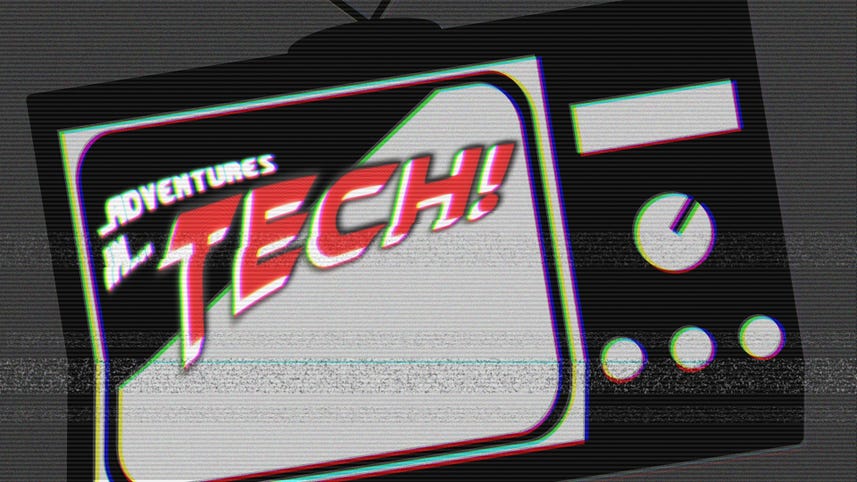
In part one of Adventures in Tech's History of TV, we saw the birth of television and the move to glorious color.
Coming up, the technologies that made TV what it is today.
[MUSIC]
Throughout the history of TV, we saw in part one, networks were in charge of what you watched.
But it'll change with a little thing called VTR.
Video tape recorders began life within the TV industry.
The first practical example being this Ampex model in 1956, used by broadcasters to tape their own programs to be re-broadcasted for different time zones.
The VR1000 however, which captured up to 60 minutes of footage on two inch wide video tape.
Cost $50,000, and was enormous, making it not ideal for the living room.
A decade later however, the first consumer versions appeared.
Then followed cassette recorders, ushering in the era of home recording in the 80s, which we loved, even though some early tapes only lasted an hour.
Meaning if you tried to record a movie, it would cut out halfway through.
[MUSIC]
Obi Wan never told you what happened to your father.
He told me enough.
He told me you killed him.
No, I.
No!
The VCR gave us an early taste of on demand programming, marking the point where networks started to lose their hold on our viewing habits.
TV's next big development would see another new technology enter the frame.
For decades, our viewing pleasure has been facilitated by the humble cathode ray tube, but another display technology was waiting in the wings.
Experimentation with liquid crystal took off as early as the 60s at RCA.
Credited with pushing the technology forward is George H.
Heilmeier who applied currents to liquid crystals sandwiched between sheets of glass realigning their molecules to effect the change in color.
Despite its head start RCA ducked out of the field it had pioneered letting other firms, notably Japanese tech companies like Sharp and Seiko.
Bring LCD screens to the likes of watches, calculators and in 1988 a 14 inch TV panel.
Lighter and massively slimmer than traditional models nevertheless it wasn't until 2007 that sales of LCD TVs overtook the bulkier CRT sets.
Four decades after RCA's first experiment.
Display tech has continued to evolve, with current flavor-of-the-month, an intriguing technology called OLED, a type of display that rose to prominence in smartphones and produces the best picture quality we've ever seen.
But the biggest change now facing television is coming from far beyond the screen, lurking in the shadows, ready to change everything.
The internet has proved the biggest technical shift in television history.
With programming no longer beamed to t.v.
sets.
But to our smartphones, tablets, or laptops via Wi-Fi, a two-way communication that's giving providers of TV a clearer view than ever of what we watch, when, and why.
The online revolution is the biggest change in how we use TV so far, but for all the change, TV itself endures.
Were still just as captivated by moving pictures as John Logie Baird was back in 1926.
And it's impossible to imagine a world where that's not the case.
[MUSIC]
[UNKNOWN] Here's to a smaller world to shared experiences and shorter attention spans.
That's the end of this season of Adventures in Tech, but we've got many more exciting videos lined up.
So keep it CNET and happy adventuring.
[MUSIC]